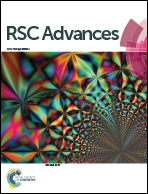Green and economical synthesis of nitrogen-doped carbon dots from vegetables for sensing and imaging applications
Abstract
Fluorescent carbon-based nanomaterials have attracted tremendous concern owing to their unique properties of chemical stability, excellent biocompatibility, tunable excitation and emission spectra, low toxicity and photostability. Herein, a green, simple and low-cost approach was present to obtain nitrogen-doped carbon dots (N-doped C-dots) with the quantum yield of 37.5% using vegetables as the sole carbon source through facile one-pot hydrothermal treatment without additional solvents. The as-prepared N-doped C-dots are fully characterized by high-resolution transmission electron microscopy, Fourier transform infrared spectroscopy, X-ray photoelectron spectroscopy, UV-vis absorption, and fluorescence spectroscopy. The synthesized N-doped C-dots displayed excellent water solubility and stability in a wide range of pH and ionic strength. As the emission of N-doped C-dots is efficiently quenched by Cu2+, the C-dots can serve as a suitable sensing platform for label-free sensitive and selective detection of Cu(II) ions with a detection limit of 9.98 nM. The cell viability results of HeLa cells proved the low toxicity of C-dots. Further, the imaging of Escherichia coli (E. coli) cells and HeLa cells demonstrated the biolabeling potential in vivo of the synthesized C-dots with low toxicity and good biocompatibility.


 Please wait while we load your content...
Please wait while we load your content...